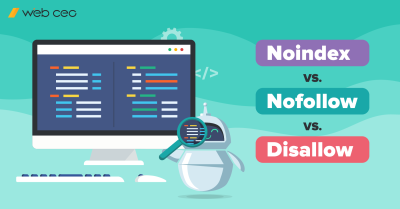
So much of marketing happens online that the real world products being advertised almost feel like an afterthought. In fact, it’s not at all uncommon to watch a commercial and find yourself completely unsure what was being advertised, in part because the product matters less than building a brand. The brand is a complex blending of emotional responses and products, of broad associations that make consumers think they can trust a company. But where does that leave products in the real world?
All is not lost for real world experiences with products, but what we see today is a complex relationship between SEO and product or brand experiences. Maybe tying the two together takes a hashtag, or maybe it’s all about being publically responsive to customer critiques. The process varies, but the interweaving of SEO and customer experience is tighter than ever before. For more insights on enhancing this relationship, consider exploring WebCEO’s SEO Tools.
The Growing Work Of UX
Site accessibility plays a big role in company standing today, as customers become more digitally literate and websites become more complicated. Users want your site to be intuitive, well built, and organized in a way that’s both interesting and efficient – and you’ll hear if they find it to be otherwise.
This is the work of user experience (UX), and to make it work for your business, you need to understand your audience clearly. Conceptualizing user personas will help you develop a sense of what they’re looking for on your site and what may drive them away. To manage your online presence and user experience effectively, check out WebCEO’s Website Audit.
In one study, for example, results showed that 48% of customers were willing to give up on a purchase due to a lagging customer experience. It pays to be mindful of customer service messages or helpline emails when working on your UX, because this is often where the problems first emerge.
UX is also a fledgling part of the ranking system, which is another reason it demands attention. Although currently only used for mobile sites, UX is likely to play a bigger part in SEO in the future, which means companies need to work the bugs out of site interactions quickly, otherwise they’ll unexpectedly find that call tracking software has removed all the numbers, or that they’ve encountered some other strange glitch that knocks down their rankings.
Find New Ways to Tangibly Center Users
Another way to give your SEO a boost is to launch a campaign that bridges the digital and the offline worlds, but centers users or customers on both ends. What does that mean exactly? Simply put, it’s about narcissism. Your customers want to feel like your company has made a product or performed a service just for them. And this narcissism makes customers want to talk about your product.
A particular kind of experiential marketing is what lies behind the highly successful Share a Coke with… campaign. With their name emblazoned soda bottle, Coke got buyers talking, posting pictures of their soda bottles, and interacting more with the brand online. To Brad Nierenberg, CEO of RedPeg Marketing, this formula reverses the usual brand building formula and makes it seem like the company is building the customers’ personal brand. Particularly with the millennial generation, it’s a strategy that works – but let’s be honest, don’t we all want things to be about us?
Empowering Customers for Your Brand
Finally, one of the best tools any company has at its disposal for improving SEO are those customers who are truly devoted to the brand. You know the ones – maybe they tweet to your company regularly or share all of your Facebook posts. They know the ins and outs of your product…maybe even better than some staff members. They’re brand experts.
Don’t underestimate how great these customers can be for your SEO as real people with real community contacts. You might consider naming them ceremonial brand ambassadors or letting them take over the company Twitter for a few days. They’ll take to these tasks with an unusual enthusiasm and bring their friends along with them. By creating this connection and interest, your brand will see views and conversions spike.
At first, it may seem odd to think that customer experience is closely tied to SEO – your customers don’t build your site or write your content, after all. But what your customers do is drive add-on content stemming from their experience, boost your digital signal, and improve your company’s connectivity, at least when those customers’ experiences are good ones.
Customers may not be the obvious place to start when planning your ranking growth strategy, but at the end of the day, they’re the most transformative thing you can bring to an otherwise flat system. In fact, when you start building experience-based interest, customers may end up contributing more than your marketing department to boosting your digital standing.


